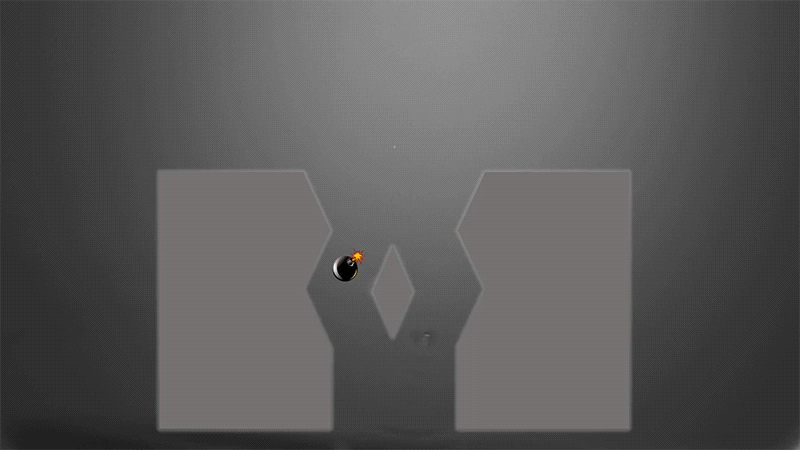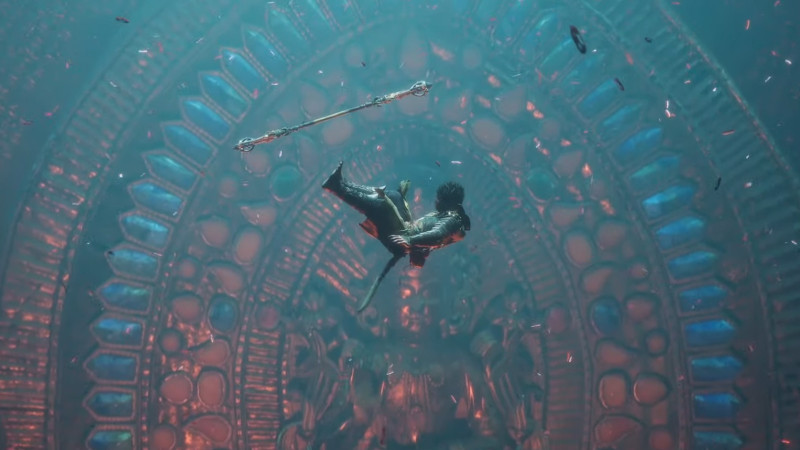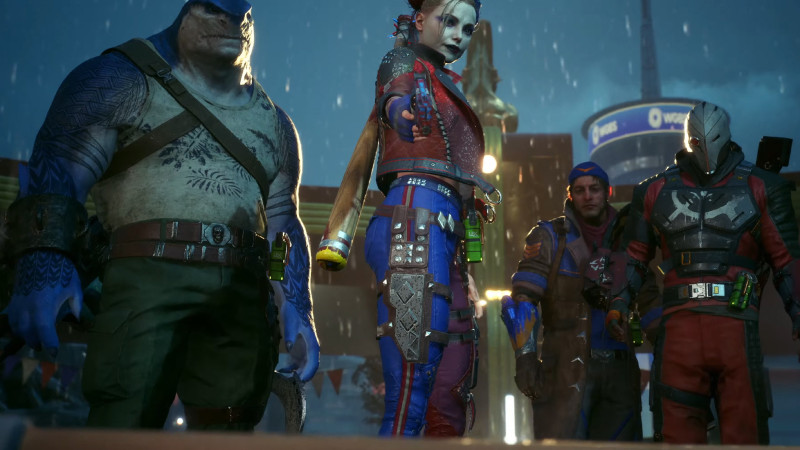Scientists have discovered a new way to investigate the structure of protons using neutrinos, known as ‘ghost particles.’…
Researchers Redesign Future mRNA Therapeutics – Technology Org
Researchers have discovered that misreading of therapeutic mRNAs by the cell’s decoding machinery can cause an unintended immune…
3 Questions: Darrell Irvine on making HIV vaccines more powerful

An MIT research team led by Professor Darrell Irvine has developed a novel kind of vaccine adjuvant: a nanoparticle that can help to stimulate the immune system to generate a stronger response to a vaccine. These nanoparticles contain saponin, a compound derived from the bark of the Chilean soapbark tree, along with a molecule called MPLA, each of which helps to activate the immune system.
The adjuvant has been incorporated into an experimental HIV vaccine that has shown promising results in animal studies, and this month, the first human volunteers will receive the vaccine as part of a phase 1 clinical trial run by the Consortium for HIV/AIDS Vaccine Development at the Scripps Research Institute. MIT News spoke with Irvine about why this project required an interdisciplinary approach, and what may lie ahead.
Q: What are the special features of the new nanoparticle adjuvant that help it create a more powerful immune response to vaccination?
A: Most vaccines, such as the Covid-19 vaccines, are thought to protect us through B cells making protective antibodies. Development of an HIV vaccine has been made challenging by the fact that the B cells that are capable of evolving to produce protective antibodies — called broadly neutralizing antibodies — are very rare in the average person. Vaccine adjuvants are important in this scenario to ensure that when we immunize with an HIV antigen, these rare B cells become activated and get a chance to participate in the immune response.
We particularly discovered that this new adjuvant, which we call SMNP (short for saponin/MPLA nanoparticles), is particularly good at helping more B cells enter germinal centers, the specialized location in lymph nodes where high affinity antibodies are produced. In animal models, SMNP also has shown unique mechanisms of action: Administering antigens with SMNP leads to better antigen delivery to lymph nodes (through increases in lymph flow) and better capture of the antigen by B cells in lymph nodes.
Q: How did your lab, which generally focuses on bioengineering and materials science, end up working on HIV vaccines? What obstacles did you have to overcome in the development of this adjuvant?
A: About 15 years ago, Bruce Walker approached me about getting involved in the HIV vaccine effort, and recruited me to join the Ragon Institute of MGH, MIT, and Harvard as a member of the steering committee. Through the Ragon Institute, I met colleagues in the Scripps Consortium for HIV/AIDS Vaccine Development (CHAVD), and we realized there was a tremendous opportunity to directly contribute to the HIV vaccine challenge, working in partnership with experts in immunogen design, structural biology, and HIV pathogenesis.
As we carried out study after study of SMNP in preclinical animal models, we realized the adjuvant had really amazing effects for promoting anti-HIV antibody responses, and the CHAVD decided this was worth moving forward to testing in humans. A major challenge was transferring the technology out of the lab to synthesize large amounts of the adjuvant under GMP (good manufacturing process) conditions for a clinical trial. The initial contract manufacturing organization (CMO) hired by the consortium to produce SMNP simply couldn’t get a process to work for scalable manufacturing.
Luckily for us, a chemical engineering graduate student, Ivan Pires, whom I co-advise with Paula Hammond, head of MIT’s Department of Chemical Engineering, had developed expertise in one particular processing technique known as tangential flow filtration during his undergraduate training. Leveraging classic chemical engineering skills in thermodynamics and process design, Ivan stepped in and solved the process issues the CMO was facing, allowing the manufacturing to move forward. This to me is what makes MIT great — the ability of our students and postdocs to step up and solve big problems and make big contributions when the need arises.
Q: What other diseases could this approach be useful for? Are there any plans to test it with other types of vaccines?
A: In principle, SMNP may be helpful for any infectious disease vaccine where strong antibody responses are needed. We are currently sharing the adjuvant with about 30 different labs around the world, who are testing it in vaccines against many other pathogens including Epstein-Barr virus, malaria, and influenza. We are hopeful that if SMNP is safe and effective in humans, this will be an adjuvant that can be broadly used in infectious disease trials.
MIT researchers observe a hallmark quantum behavior in bouncing droplets
In our everyday classical world, what you see is what you get. A ball is just a ball, and when lobbed through the air, its trajectory is straightforward and clear. But if that ball were shrunk to the size of an atom or smaller, its behavior would shift into a quantum, fuzzy reality. The ball would exist as not just a physical particle but also a wave of possible particle states. And this wave-particle duality can give rise to some weird and sneaky phenomena.
One of the stranger prospects comes from a thought experiment known as the “quantum bomb tester.” The experiment proposes that a quantum particle, such as a photon, could act as a sort of telekinetic bomb detector. Through its properties as both a particle and a wave, the photon could, in theory, sense the presence of a bomb without physically interacting with it.

Credit: Courtesy of the researchers
The concept checks out mathematically and is in line with what the equations governing quantum mechanics allow. But when it comes to spelling out exactly how a particle would accomplish such a bomb-sniffing feat, physicists are stumped. The conundrum lies in a quantum particle’s inherently shifty, in-between, undefinable state. In other words, scientists just have to trust that it works.
But mathematicians at MIT are hoping to dispel some of the mystery and ultimately establish a more concrete picture of quantum mechanics. They have now shown that they can recreate an analog of the quantum bomb tester and generate the behavior that the experiment predicts. They’ve done so not in an exotic, microscopic, quantum setting, but in a seemingly mundane, classical, tabletop setup.
In a paper appearing today in Physical Review A, the team reports recreating the quantum bomb tester in an experiment with a study of bouncing droplets. The team found that the interaction of the droplet with its own waves is similar to a photon’s quantum wave-particle behavior: When dropped into a configuration similar to what is proposed in the quantum bomb test, the droplet behaves in exactly the same statistical manner that is predicted for the photon. If there were actually a bomb in the setup 50 percent of the time, the droplet, like the photon, would detect it, without physically interacting with it, 25 percent of the time.
The fact that the statistics in both experiments match up suggests that something in the droplet’s classical dynamics may be at the heart of a photon’s otherwise mysterious quantum behavior. The researchers see the study as another bridge between two realities: the observable, classical world and the fuzzier quantum realm.
“Here we have a classical system that gives the same statistics as arises in the quantum bomb test, which is considered one of the wonders of the quantum world,” says study author John Bush, professor of applied mathematics at MIT. “In fact, we find that the phenomenon is not so wonderful after all. And this is another example of quantum behavior that can be understood from a local realist perspective.”
Bush’s co-author is former MIT postdoc Valeri Frumkin.
Making waves
To some physicists, quantum mechanics leaves too much to the imagination and doesn’t say enough about the actual dynamics from which such weird phenomena supposedly arise. In 1927, in an attempt to crystallize quantum mechanics, physicist Louis de Broglie presented the pilot wave theory — a still-controversial idea that poses a particle’s quantum behavior is determined not by an intangible, statistical wave of possible states but by a physical “pilot” wave of its own making, that guides the particle through space.
The concept was mostly discounted until 2005, when physicist Yves Couder discovered that de Broglie’s quantum waves could be replicated and studied in a classical, fluid-based experiment. The setup involves a bath of fluid that is made to subtly vibrate up and down, though not quite enough to generate waves on its own. A millimeter-sized droplet of the same fluid is then dispensed over the bath, and as it bounces off the surface, the droplet resonates with the bath’s vibrations, creating what physicists know as a standing wave field that “pilots,” or pushes the droplet along. The effect is of a droplet that appears to walk along a rippled surface in patterns that turn out to be in line with de Broglie’s pilot wave theory.
For the last 13 years, Bush has worked to refine and extend Couder’s hydrodynamic pilot wave experiments and has successfully used the setup to observe droplets exhibiting emergent, quantum-like behavior, including quantum tunneling, single-particle diffraction, and surreal trajectories.
“It turns out that this hydrodynamic pilot-wave experiment exhibits many features of quantum systems which were previously thought to be impossible to understand from a classical perspective,” Bush says.
Bombs away
In their new study, he and Frumkin took on the quantum bomb tester. The thought experiment begins with a conceptual interferometer — essentially, two corridors of the same length that branch out from the same starting point, then turn and converge, forming a rhombus-like configuration as the corridors continue on, each ending in a respective detector.
According to quantum mechanics, if a photon is fired from the interferometer’s starting point, through a beamsplitter, the particle should travel down one of the two corridors with equal probability. Meanwhile, the photon’s mysterious “wave function,” or the sum of all its possible states, travels down both corridors simultaneously. The wave function interferes in such a way to ensure that the particle only appears at one detector (let’s call this D1) and never the other (D2). Hence, the photon should be detected at D1 100 percent of the time, regardless of which corridor it traveled through.
If there is a bomb in one of the two corridors, and a photon heads down this corridor, it predictably triggers the bomb and the setup is blown to bits, and no photon is detected at either detector. But if the photon travels down the corridor without the bomb, something weird happens: Its wave function, in traveling down both corridors, is cut short in one by the bomb. As it’s not quite a particle, the wave does not set off the bomb. But the wave interference is altered in such a way that the particle will be detected with equal probability at D1 and D2. Any signal at D2 therefore would mean that a photon has detected the presence of the bomb, without physically interacting with it. If the bomb is present 50 percent of the time, then this weird quantum bomb detection should occur 25 percent of the time.
In their new study, Bush and Frumkin set up an analogous experiment to see if this quantum behavior could emerge in classical droplets. Into a bath of silicon oil, they submerged a structure similar to the rhombus-like corridors in the thought experiment. They then carefully dispensed tiny oil droplets into the bath and tracked their paths. They added a structure to one side of the rhombus to mimic a bomb-like object and observed how the droplet and its wave patterns changed in response.
In the end, they found that 25 percent of the time a droplet bounced through the corridor without the “bomb,” while its pilot waves interacted with the bomb structure in a way that pushed the droplet away from the bomb. From this perspective, the droplet was able to “sense” the bomb-like object without physically coming into contact with it. While the droplet exhibited quantum-like behavior, the team could plainly see that this behavior emerged from the droplet’s waves, which physically helped to keep the droplet away from the bomb. These dynamics, the team says, may also help to explain the mysterious behavior in quantum particles.
“Not only are the statistics the same, but we also know the dynamics, which was a mystery,” Frumkin says. “And the inference is that an analogous dynamics may underly the quantum behavior.”
“This system is the only example we know which is not quantum but shares some strong wave-particles properties,” says theoretical physicist Matthieu Labousse, of ESPCI Paris, who was not involved in the study. “It is very surprising that many examples thought to be peculiar to the quantum world can be reproduced by such a classical system. It enables to understand the barrier between what it is specific to a quantum system and what is not. The latest results of the group at MIT pushes the barrier very far.”
This research is supported, in part, by the National Science Foundation.
Climate Change Effects Hit Marine Ecosystems in Multiple Waves, According to Marine Ecologists – Technology Org
A Brown University professor and two Brown-trained scientists co-authored a research review proposing a ‘more realistic’ conceptual model…
Black Myth: Wukong Gets August Release Date In New Gameplay Trailer

Developer Game Science’s Soulslike action RPG, Black Myth: Wukong, is coming to PlayStation 5, Xbox Series X/S, and PC next August. More specifically, it hits those platforms on August 20, 2024, as revealed in a new gameplay trailer that aired during The Game Awards 2023.
Alongside the August 20 release date, this new Black Myth: Wukong trailer also gives us our biggest look yet at the game’s combat, which continues to look great.
Check out it in the Black Myth: Wukong release date trailer for yourself below:
[embedded content]
Black Myth: Wukong pits the player’s monkey warrior character, known as the Destined One, against various legends, foes, and creatures from throughout Chinese Mythology. It also features a story based on Journey to the West.
Black Myth: Wukong hits PlayStation 5, Xbox Series X/S, and PC on August 20, 2024.
For more, check out this Black Myth: Wukong gameplay trailer from earlier this year.
Are you excited for Black Myth: Wukong? Let us know in the comments below!
Get Another Look At Banishers: Ghosts of New Eden In New Cinematic Trailer

Banishers: Ghosts of New Eden, the latest from Life is Strange developer Don’t Nod Entertainment, hits PlayStation 5, Xbox Series X/S, and PC in February. Ahead of its release early next year, the studio released a new cinematic trailer to highlight the game’s narrative at The Game Awards 2023.
While Banishers features intense action-RPG gameplay, it’s also a Don’t Nod game, which means players can expect a heavy emphasis on storytelling. And tonight’s trailer speaks to that.
Check out the latest Banishers: Ghosts of New Eden cinematic trailer for yourself below:
[embedded content]
“New Eden, 1695: Antea and Red are lovers and Banishers, trained spirit-hunters protecting people from lingering specters,” a press release reads. “But when tragedy strikes and Antea herself becomes a ghost, will you honor your Banisher oath or sacrifice the living in a desperate bid to bring your beloved back?”
Here are some additional Banishers: Ghosts of New Eden screenshots:
Banishers: Ghosts of New Eden hits PlayStation 5, Xbox Series X/S, and PC on February 13.
Are you excited for Banishers: Ghosts of New Eden? Let us know in the comments below!
Here’s The Suicide Squad: Kill The Justice League Trailer From The Game Awards

Suicide Squad: Kill the Justice League has been in development for a long time; by the time it comes out next year, it will have been nine years since Rocksteady’s last game. But after years of secret development and repeated delays, it’s finally around the corner, and The Game Awards just gave us our latest look. See for yourself in the trailer below:
[embedded content]
The notion of killing the Justice League, some of the most powerful people in the DC universe, has always felt like an impossible task for the Suicide Squad, and the more we see of these corrupted superheroes, the harder it looks. This trailer gives us a look at Green Lantern’s arsenal of hard light weaponry, the Flash’s speed and lightning bolts, Wonder Woman’s lasso of truth, and a shadowy Batman (which is potentially related to Scarecrow’s fear gas, though that’s just speculation).
Luckily, the Squad is equipped with a wide array of weapons and traversal techniques, making them way more mobile than they would normally be in the comics or movies. We get a good look at new gameplay of them swinging, soaring, and shooting as well, which you can experience solo with AI companions or online with friends.
But the best part of the new trailer? The release date hasn’t changed. We can take on the Justice League next year on February 2.
Hoyoverse’s Zenless Zone Zero Gets 2024 Release Year In New Gameplay Trailer

Hoyoverse, the team behind Genshin Impact and Honkai Star Rail, has released a new trailer for its next game, Zenless Zone Zero. Unlike its other two games, Zenless Zone Zero puts players in a futuristic metropolis in control of various characters capable of fast-paced, stylish action.
Like Genshin Impact and Honkai Star Rail, Zenless Zone Zero features an anime-esque art style, with its characters and much of its world looking almost animated. This new trailer, which Hoyoverse revealed during The Game Awards 2023, showcases more of the game’s narrative and its third-person action.
Check out the latest Zenless Zone Zero gameplay trailer for yourself below:
[embedded content]
As you can see, Zenless Zone Zero is shaping up to be another great Hoyoverse game, and you don’t have to wait too much longer to play it because it hits Android, iOS, and Windows PCs in 2024.
Are you going to check out Zenless Zone Zero next year? Let us know in the comments below!
Psyonix’s Rocket Racing Game Shines In Fortnite | New Gameplay Today

Announced alongside Lego Fortnite, a new survival crafting experience, Rocket Racing is developer Psyonix’s first new release since Rocket League in 2015 – and it’s only playable inside Fortnite. Returning guest and gaming journalist Jesse Vitelli joins Game Informer’s Alex Van Aken to show off Rocket Racing gameplay while discussing why the racing game is actually great.
See Rocket Racing In Action:
[embedded content]
Subscribe to Game Informer’s YouTube channel if you enjoy this look at Rocket Racing; and then catch up on previous New Gameplay Today episodes right here.
